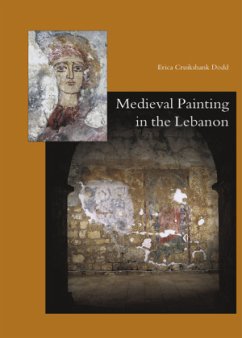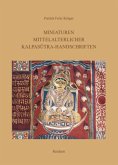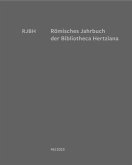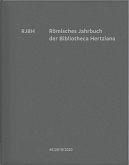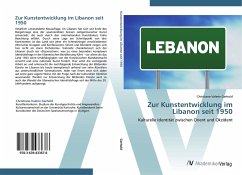Christians in Lebanon have been painting their churches ever since the time of Christ but their work is largely unknown. Presently, the larger study of Byzantine painting has barely touched upon medieval Lebanon and very little has been published on a closely connected group of paintings in medieval Syria. Most, but not all of the paintings that have survived to the present day in Lebanon and also in Syria belong to the 12th and 13th centuries during the Crusades, a period when the greatest historical developments were taking place. As long as this region remained unexamined, an understanding of the cultural history of the Mediterranean basin was incomplete. This study approaches Lebanese paintings from two aspects. In the first place, it describes 26 monuments still visible today. The main body of the text then discusses the paintings as a group, including chapters on history, architecture, iconography and style.
These chapters explore and attempt to explain relationships between Lebanese painting and other paintings in contemporary, Christian communities. Ideas moved with great rapidity across the Mediterranean during the 12th and 13th centuries and the Lebanese frescoes reflect the vigorous and colourful society of Outremer. Among all historical circumstances since the fall of the Roman Empire, the Crusades had the most far-reaching impact on European history and culture. Arab history was not unaffected by the Crusades but the greater impulse was from the East to the West. There were momentous impulses that reached across the seas at this time, not the least of them being the burgeoning commerce of the silk route and the approach of the Mongols. Lebanese painting reflects changes of this kind during this period. They not only illumine our understanding of medieval history in the Mediterranean basin, but also our understanding of the East and the West we experience today.
Hinweis: Dieser Artikel kann nur an eine deutsche Lieferadresse ausgeliefert werden.
These chapters explore and attempt to explain relationships between Lebanese painting and other paintings in contemporary, Christian communities. Ideas moved with great rapidity across the Mediterranean during the 12th and 13th centuries and the Lebanese frescoes reflect the vigorous and colourful society of Outremer. Among all historical circumstances since the fall of the Roman Empire, the Crusades had the most far-reaching impact on European history and culture. Arab history was not unaffected by the Crusades but the greater impulse was from the East to the West. There were momentous impulses that reached across the seas at this time, not the least of them being the burgeoning commerce of the silk route and the approach of the Mongols. Lebanese painting reflects changes of this kind during this period. They not only illumine our understanding of medieval history in the Mediterranean basin, but also our understanding of the East and the West we experience today.
Hinweis: Dieser Artikel kann nur an eine deutsche Lieferadresse ausgeliefert werden.
"Erica Cruikshank Dodd began her exploration of frescoes in Lebanon in 1.971. and completed
this catalogue of her findings in 2004. (...) One could hardly exaggerate the difficulties of completing this work over this period in this part of the Mediterranean, and it must be a matter of considerable satisfaction that the key monuments are now accessible in the art-historical literature. (...) This book is a considerable achievement, the result of very difficult fieldwork."
By Robin Cormack
In: Speculum 2006, pp. 837-838
-----------------------------------------------------------------------------------------------------------------------------------------------
"This beautifully produced book represents a major contribution to the growing body of work on the Christian visual arts of the medieval Mediterranean during the period of the crusades. Twenty-six monuments in four main areas in the Lebanon are included, located in or near the Koura - the plain near Tripoli; the Qadisha valley, high in the mountains; the foothills behind Batroun, below Tripoli; and the area of Jbeil (Byblos) and Beirut. The paintings are described in the catalogue, with their inscriptions and a bibliography, with proposed dating. There are numerous black-and-white and colour plates, a map, plans, bibliography, and index."
By Lucy-Ann Hunt
In: Crusades, Vol. 6 (2007), pp. 191-193
this catalogue of her findings in 2004. (...) One could hardly exaggerate the difficulties of completing this work over this period in this part of the Mediterranean, and it must be a matter of considerable satisfaction that the key monuments are now accessible in the art-historical literature. (...) This book is a considerable achievement, the result of very difficult fieldwork."
By Robin Cormack
In: Speculum 2006, pp. 837-838
-----------------------------------------------------------------------------------------------------------------------------------------------
"This beautifully produced book represents a major contribution to the growing body of work on the Christian visual arts of the medieval Mediterranean during the period of the crusades. Twenty-six monuments in four main areas in the Lebanon are included, located in or near the Koura - the plain near Tripoli; the Qadisha valley, high in the mountains; the foothills behind Batroun, below Tripoli; and the area of Jbeil (Byblos) and Beirut. The paintings are described in the catalogue, with their inscriptions and a bibliography, with proposed dating. There are numerous black-and-white and colour plates, a map, plans, bibliography, and index."
By Lucy-Ann Hunt
In: Crusades, Vol. 6 (2007), pp. 191-193

